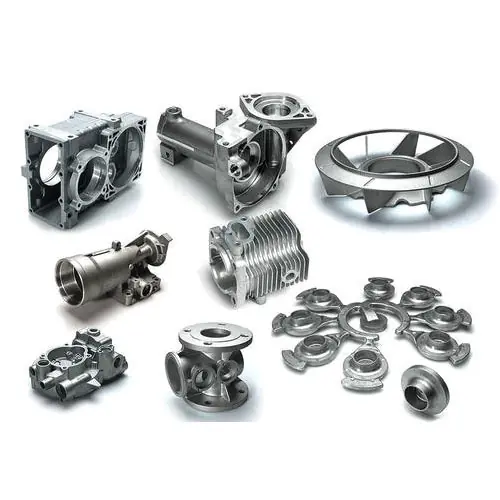Aluminum die castings are widely used for their lightweight, high strength, and affordability. Aluminum is also one of the more easily casted metals. As is the case with other production processes, sub-optimal or inconsistencies in process control can lead to casting defects. When it comes to aluminum die castings, drag marks are some of the most common defects. So, what causes them, and how can they be prevented? Read on to find out!
What are Drag Marks?
Drag marks are cosmetic defects in die casting arising as a result of poor tooling design, uneven heating and cooling, and metal adhesion. Drag marks alter aluminum castings’ cosmetic appearance, making them less presentable and in need of other finishing services.
Causes of Drag marks
Drag marks are occasioned by thermal, adhesive, design, and material challenges in the die casting operation. They could arise due to poor process control, lack of adhesives, or poor ejection mechanisms of the aluminum casting. Here are more details around the factors that may lead to drag mark defects:
· Thermal factors
At temperatures above 200oC, molten aluminum tends to become sticky and may scratch the mold tool during the casting process. Uneven cooling of the parts may cause some areas of the part to solidify faster than others. This may also result in some abrasion during part ejection in the regions that have solidified more quickly than others.
· Design consideration
Zero or poor draft angles can affect the ejection of the aluminum casting from the tool. Because the part cannot slide out naturally, the casting may be pulled out and deformed while exiting the mold tool. A poor draft angle in the casting core and wall may also cause the casting to become scratched during mold parting.
· Material composition
If the aluminum alloy used for the die casting is composed of less than 0.6 percent of iron, there will be a high level of affinity of the molten material with the mold. This will consequently result in some stickiness and adhesion to the mold.
· Mold tooling
Scars on the mold’s surface, poor mold design, poor cooling considerations, and poor gate system designs can all result in drag mark defects in aluminum castings. If the mold core’s surface is rough, the casted material will inherit a rough surface texture and drag or strain during the die casting process.
· Poor lubrication
Poor use of mold release agents and other lubricating agents that facilitate part ejection will cause drag marks. This is because of the high level of friction between the aluminum casting and the mold when the solidified part is due for ejection.
Preventing Drag marks
There are several simple methods to prevent drag mark defects in aluminum die casting operations. Here are some of the most common solutions:
1. Ensure that you use an adequate draft angle. A small draft is better than zero draft
2. Improve mold tooling design and gate systems to prevent metal flow impact in the core or wall. Also, try to design the mold tool to reduce the speed at which the mold is filled with the molten aluminum.
3. Increase the iron content of the aluminum alloy before commencing casting
4. Polish mold core surfaces and repair deviating mold components where possible
5. Use sufficient mold release agents and spray uniformly before trying to eject parts.
6. Polish and finish parts with scars and drag marks.
7. Optimize heating, cooling, and other process parameters during your die casting operation.
Firstpart Die Casting Manufacturing Services
Our experience in metal die casting makes us one of the most competent metal casters, using a wide array of methods to ensure high-quality, defect-free parts every time. Firstpart will also provide you with free quotes, design and finish suggestions on your next project right away! Work with us and allow us to manage your die casting production needs and help you transition from rock solid prototypes to excellently finished die-casted products. Please click here to get in touch with one of our experts and start your amazing journey to the perfect casting part.










